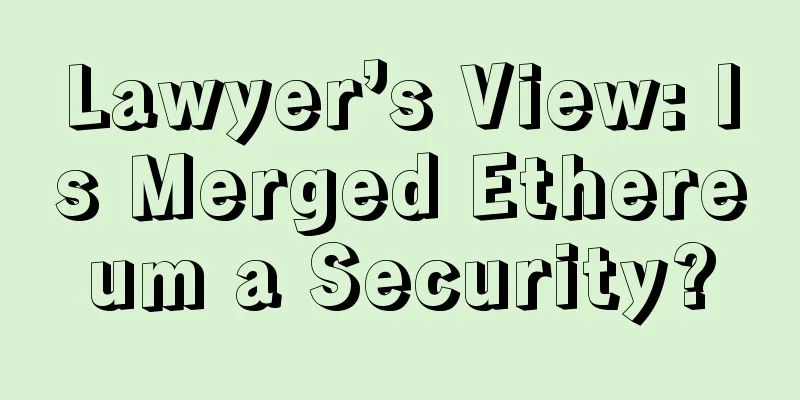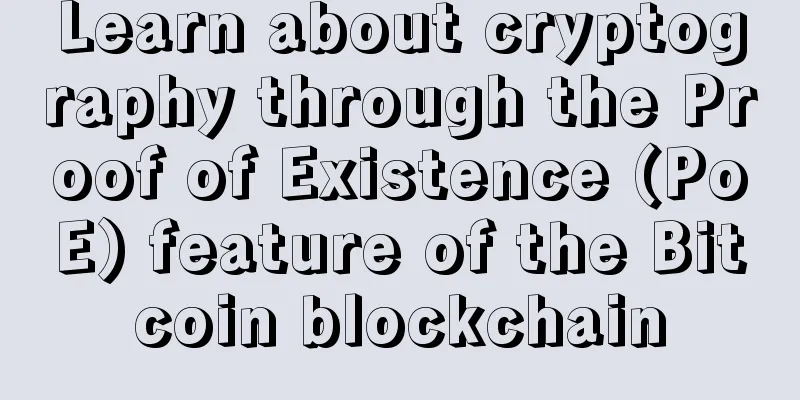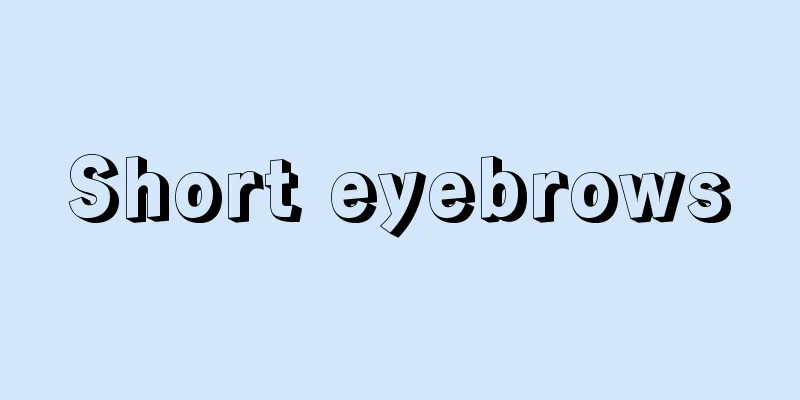Lawyer’s View: Is Merged Ethereum a Security?

|
From its creation, the debate over the nature of ETH has been difficult to pin down, and has only intensified with the recent transition of the protocol to a “proof-of-stake” (PoS) transaction validation mechanism. The core is whether ETH is a commodity or a security. Gary Gensler, chairman of the U.S. Securities and Exchange Commission (SEC), was the first to talk about this after the "merger". His main position therefore boils down to the fact that most crypto tokens qualify as “securities” under the Howey test. According to this test, an investment contract exists if “an investment of money is made in a common enterprise with a reasonable expectation of profit from the activities of the other participants.” According to Gary Gensler , after switching to POS, Ethereum began to reflect more of the nature of securities, because "token staking is very similar to lending", and investing in Ether is actually associated with the expectation of profit, because the activities of all stakeholders ("other participants") allow the entire verification mechanism to exist, even if the profit of a specific stakeholder depends on his specific interests. Meanwhile, the Responsible Financial Innovation Act (RFIA) calls most digital currencies commodities, which should include ETH. RFIA provides clear criteria for determining when a digital asset is considered a commodity and when it is considered a security. Tokens issued under an investment contract would qualify as “ancillary assets” if the asset does not give the owner corporate rights. RFIA clearly distinguishes ancillary assets from the underlying investment contract that records the ancillary asset transfer agreement. It turns out that as long as ETH gives the company rights, including receiving dividends, it is a commodity. Note: On June 7, 2022, U.S. Senators Cynthia Lummis (R-WY) and Kirsten Gillibrand (D-NY) introduced the Responsible Financial Innovation Act (RFIA) (S. 4356), which aims to establish a regulatory system for digital assets in the United States. This highly anticipated bill aims to address the long-standing uncertainty of financial regulators over their jurisdiction over digital assets, clarify tax issues for digital assets and decentralized autonomous organizations (DAOs), and establish information disclosure and consumer protection obligations for issuers and service providers of digital assets. The same logic is used in the recent Senate Agriculture Committee Digital Goods Consumer Protection Act (the “Act”), which was released in early August. The bill defines "digital commodities," which include Bitcoin and Ethereum, and excludes certain financial instruments that include securities. As a result, the Commodity Futures Trading Commission ("CFTC") specifies its jurisdiction over ETH, but leaves room for regulation of other assets that are securities-related and will be regulated by the SEC. The bill will systematize the process by which digital assets are determined to be commodities. The bill also gives the CFTC exclusive jurisdiction over digital commodity transactions, except for transactions where the seller or consumer uses the digital commodity solely to purchase or sell goods or services. As we can see, there are different ways to regulate ETH. In my opinion, the difference in approach is due to the special nature of ETH: 1. In the case of staking, we are talking about the income earned by placing tokens as a mechanism to validate blockchain transactions. Yes, it is very similar to debt securities. 2. ETH may be the subject of an asset sale transaction. In this case, it is a commodity. Therefore, depending on the proven functionality of Ethereum, there will be applicable regulations in specific situations. Despite the introduction of legislative provisions regarding the legal nature of ETH, the SEC will not relax its supervision of digital assets, especially ETH. In the near future, we will likely witness several public cases when the SEC and CFTC will actually establish their jurisdiction over the nature of ETH. These cases will form the basis for future laws that will simply address faits accompli. About the author: Web3 lawyer with more than 10 years of experience in the corporate and intellectual property fields. Main areas of expertise are general corporate law, mergers and acquisitions, NFT, venture capital, intellectual property, contracts, WEB3, and legal due diligence. |
<<: How to invest in cryptocurrencies in an uncertain market environment?
>>: Cobo Security Team: Hidden Risks and Arbitrage Opportunities in ETH Hard Fork
Recommend
Four types of moles that can bring good luck
1. Mole on the top of the head In physiognomy, if...
On GRIN, MimbleWimble, and Monetary Policy
Grin is a new cryptocurrency that aims to provide...
How to resolve the heavy forehead wrinkles
In fact, we also need to learn how to see a perso...
How does a woman with a high nose but no flesh on the nose look?
The nose is an important part of our facial featu...
How to read a boy's palm
How should we read a boy's palm? From what as...
Palm lines fortune telling palm lines fortune telling
Palm reading and fortune telling is a widely spre...
Analysis of the palmistry characteristics of good women
What are the characteristics of a good woman'...
The fuse of the bull market has been completely ignited
Many friends who have not experienced 2017 often ...
Eyebrows tell you who is worth making friends with.
Eyebrows are one of the five facial features and ...
Read information from a woman's eyes and face. Understand the fortune of a woman through her eyes and face.
Woman with different eyes If a woman has differen...
Report: 22% of respondents expect Bitcoin to reach $100,000
On March 5, Goldman Sachs released a survey on Bi...
[Update] Grayscale increased its holdings of 1,639 BTC and 15,261 BCH last week
Recently, Grayscale's holdings have attracted...
The top American mining farm that once issued coins and claimed to mine for 50 years has also collapsed
In recent days, the price of Bitcoin has continue...
What do people with dimples say?
Not everyone has dimples, but people with dimples...
What is the special meaning of a man's nose bridge?
The so-called nose knot refers to a man's pro...









